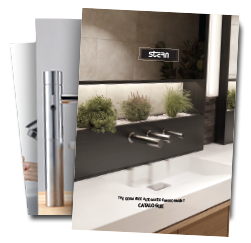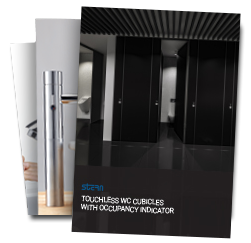Touchless sanitary solutions
Clean, hygienic & bacteria-free bathroom solution
As a leading manufacturer of touchless sanitary solutions for commercial restrooms, we offer a range of products including touchless faucets, electronic automatic soap dispensers, and complete behind-the-mirror wash stations. All of our products are designed and manufactured specifically for high traffic commercial uses and public areas. Looking for smart, touch-free solutions to improve hygiene and reduce the risk of contamination?
Our touchless sanitary solutions for commercial restrooms are the perfect choice. Explore our range of products today and take the first step towards a germ-free, touch-free environment.
Q&A
Learn about touchless sanitary solutions for commercial bathrooms!
Effective methods to reduce the transmission of germs and bacteria are touchless sanitary options such as touchless hand sanitizer dispensers and touchless soap dispensers. Although these can be effective, it is vital to acknowledge that these are not a substitute for proper hand washing with soap and water.
One of the primary advantages of touchless sanitary options is that they eliminate the need for physical contact, reducing the risk of contamination. For instance, when using a touchless hand sanitizer dispenser, you don’t have to touch the dispenser, thereby decreasing the chance of contamination from potentially germs-laden surfaces.
Nevertheless, it’s crucial to correctly use touchless sanitary options for maximum effectiveness. For example, when using a touchless hand sanitizer dispenser, make sure to thoroughly rub the sanitizer into your hands and let it dry fully to guarantee its efficacy in killing germs and bacteria.
In conclusion, touchless sanitary options can aid in reducing the spread of germs and bacteria when used appropriately, but they shouldn’t be viewed as a replacement for proper hand hygiene practices.
There are several forms of touchless sanitary solutions that one can choose from, which include:
Touchless hand sanitizer dispensers – These dispensers are designed to release hand sanitizer without the need for direct contact and typically utilize infrared sensors to identify the presence of a hand and dispense the required amount of hand sanitizer.
Touchless soap dispensers – Similar to touchless hand sanitizer dispensers, these dispense soap instead of hand sanitizer and also use infrared sensors to detect the presence of a hand.
Touchless faucets – These faucets are automated, enabling users to turn them on and off without touching the handle, thanks to infrared sensors that detect the presence of a hand.
Touchless paper towel dispensers – These dispensers release paper towels without the need for physical touch and may use infrared sensors or other sensing methods to detect a hand and dispense the necessary amount of paper towels.
Touchless toilet flush systems – These systems allow for flushing without physical touch, through the use of infrared sensors or other sensing methods that detect the presence of a hand or foot and activate the flush mechanism.
These are only a few examples of the various touchless sanitary solutions available. Other solutions may include touchless door handles, touchless trash cans, and touchless elevators.
There are a few potential downsides to using touchless sanitary solutions, such as cost and maintenance issues.
One potential downside is the cost of purchasing and installing these systems. Touchless sanitary solutions may be more expensive than traditional solutions, such as manual soap dispensers or faucets. Additionally, the cost of maintaining and repairing these systems may be higher due to the complexity of the technology involved.
Another potential downside is the need for regular maintenance and cleaning. Touchless sanitary solutions, such as touchless hand sanitizer dispensers and touchless soap dispensers, may require regular refills and cleaning in order to function properly. This can be an additional burden on facilities management staff, who may need to devote time and resources to maintaining these systems.
It is important to carefully consider the costs and maintenance requirements of touchless sanitary solutions before making a decision to purchase and install them. In some cases, the benefits of improved hygiene and reduced contamination may outweigh the additional costs and maintenance requirements, while in other cases, traditional solutions may be more appropriate.
There are several ways that touchless sanitary solutions can be incorporated into a personal or business hygiene routine:
Use touchless hand sanitizer dispensers: These can be placed in convenient locations, such as near entrances or exits, to encourage people to sanitize their hands regularly.
Use touchless soap dispensers: These can be used in restrooms or other areas where people need to wash their hands.
Use touchless faucets: These can be installed in restrooms or other areas where people need to wash their hands.
Use touchless paper towel dispensers: These can be placed in restrooms or other areas where people need to dry their hands.
Use touchless toilet flush systems: These can be installed in restrooms to eliminate the need for physical contact with the flush handle.
By incorporating touchless sanitary solutions into your personal or business hygiene routine, you can help reduce the risk of contamination and improve overall hygiene. It is important to follow proper hand hygiene practices, such as washing your hands with soap and water or using hand sanitizer, in order to maximize the effectiveness of these solutions.

 Boreal
Boreal Classic
Classic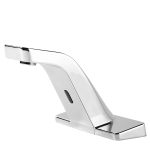 Condor
Condor Cool TF
Cool TF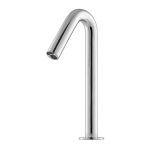 Csaba
Csaba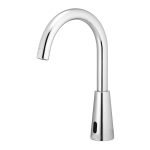 Dolphin
Dolphin Easy
Easy Elite
Elite Extreme
Extreme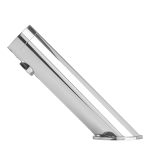 Green
Green Quadrat DM
Quadrat DM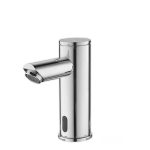 Smart
Smart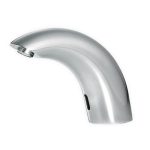 Swan
Swan Touch Free
Touch Free Trendy
Trendy Trendy T
Trendy T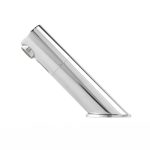 Tubular DM
Tubular DM Apollo AL
Apollo AL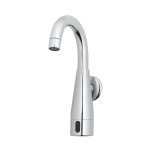 Apollo Free
Apollo Free Apollo Medical
Apollo Medical BTM
BTM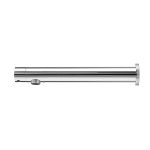 D28
D28 Extreme CS
Extreme CS Malmo
Malmo Nara Q
Nara Q Quadrat
Quadrat Tubular
Tubular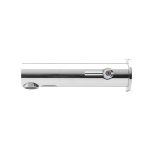 Tubular 1000
Tubular 1000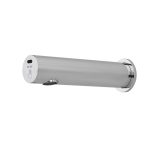 Tubular Wave DP LE Touchless Wall Tap
Tubular Wave DP LE Touchless Wall Tap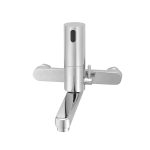 Washfree 1000
Washfree 1000 Green Time
Green Time
